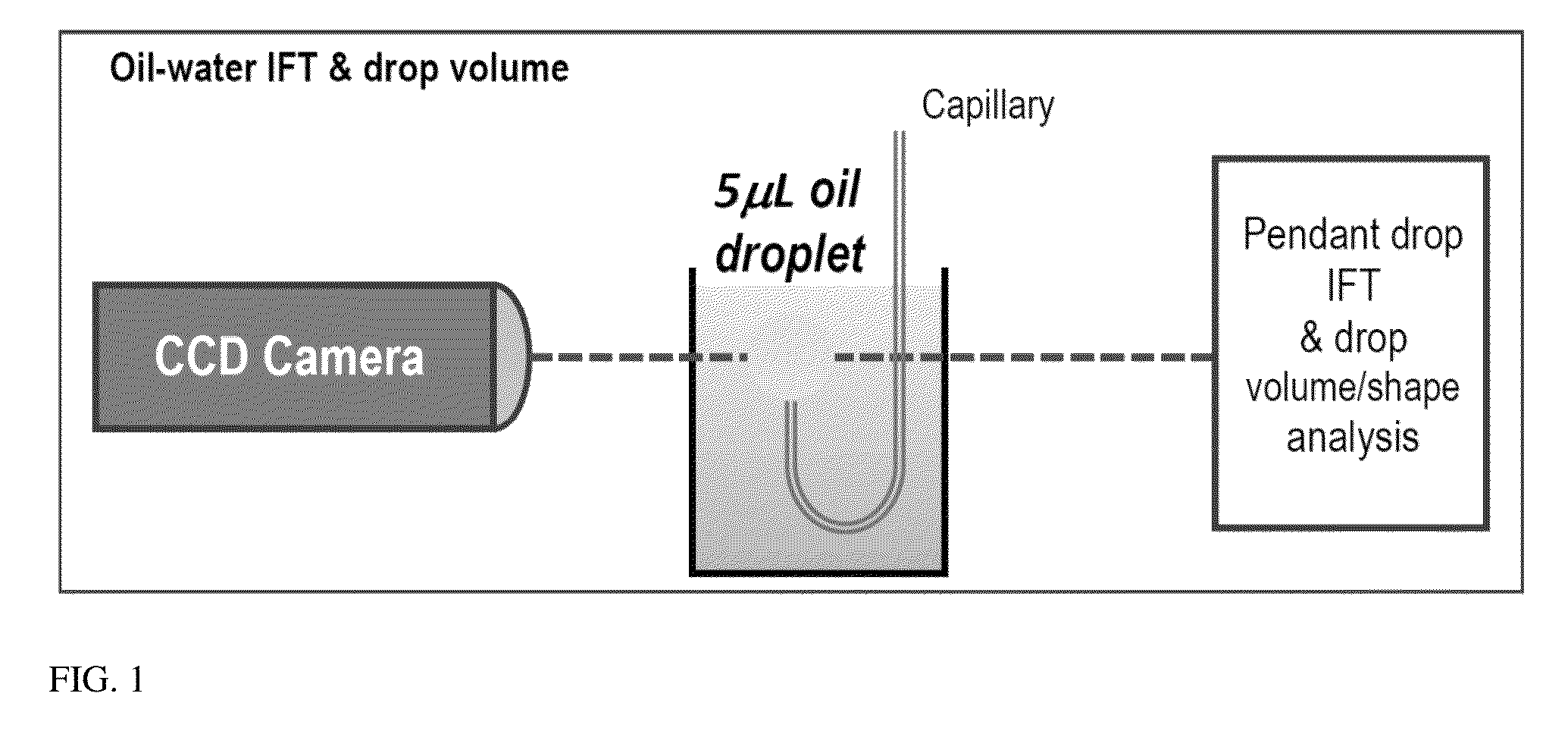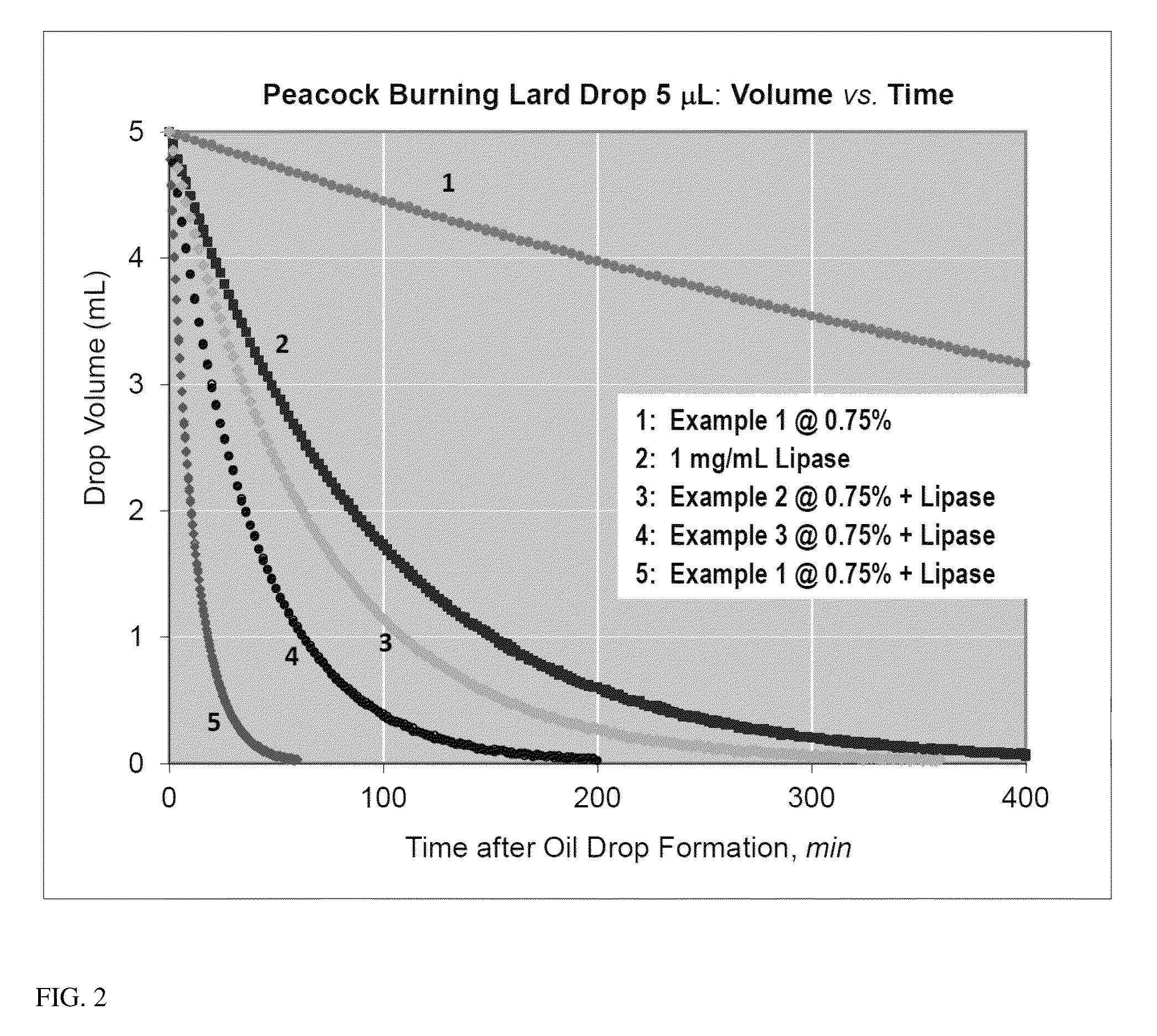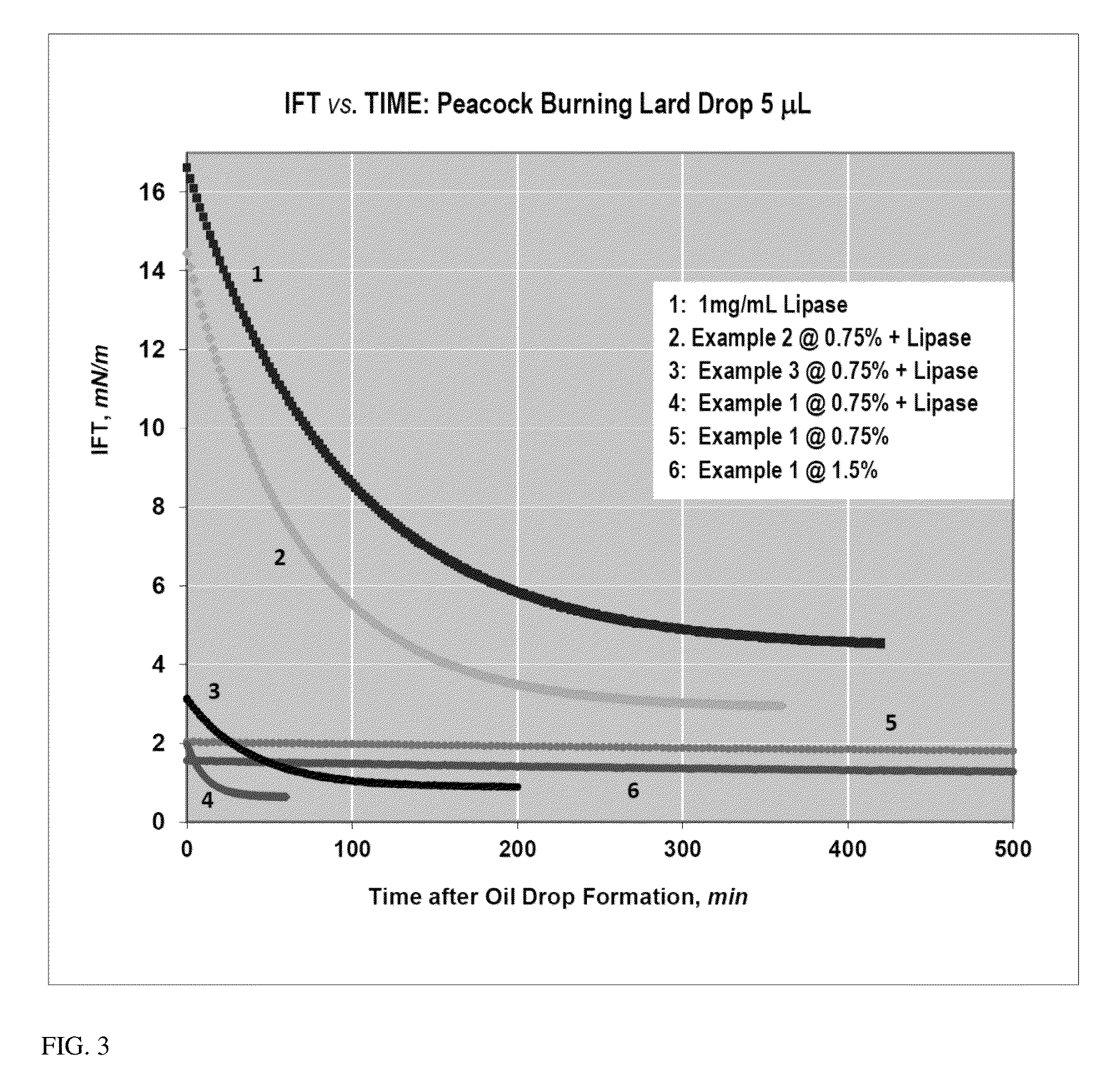Protein-enhanced surfactants for enzyme activation
a surfactant and protein technology, applied in the field of enzyme activation of protein-enhanced surfactants, can solve problems such as prone to denaturation or inactivation, and achieve the effect of increasing the catalytic activity of an interfacial hydrolytic and accelerating the rate of lipase activity
- Summary
- Abstract
- Description
- Claims
- Application Information
AI Technical Summary
Benefits of technology
Problems solved by technology
Method used
Image
Examples
experiment 1
[0030]Initial tests with lipase were conducted with a protein-surfactant cleaning composition that comprised both anionic and nonionic surfactants. It has been found that the sevenfold increase in lipase activity occurs, as measured by the time it took to digest a droplet of oil / grease down to 5% of its initial volume, (4) Although activation of lipase by synthetic surfactants has been previously known [Regulation of the interfacial activation within the Candida rugosa lipase family. M.A. Permas, et al. J. Phys. Organic Chem., v.22 (5), pp. 508-514(2009; Enhancing effect of Tween-80 on lipase performance in enantioselective hydrolysis of ketoprofen ester. You-Yan Liu, et al., J. Molec. Catalysis B: Enzymatic, v.10 (5), pp. 523-529 (2000); see also: [www.xtallqfr.csic.es / grupo / xjuan / lipasa], the enhancement of the activation effect by use of a complex formed between the surfactant(s) and yeast extracts could not be predicted, and, moreover, the involvement of proteins might have both...
experiment 2
[0048]Cellulase activity was determined by measuring glucose formation from cellulotic breakdown of cellulose (11).
[0049]Substrate: Watman paper #1
[0050]A—Enzyme: TCI Cellulase from Aspergillus niger, 5 mg / mL, purified from glucose by ultrafiltration / centrifugation
[0051]B—SLS: sodium lauryl sulfate, 500 ppm
[0052]C—Yeast exo-proteins: 500 ppm of yeast exo-protein solution
[0053]D—Yeast exo-proteins, 500 ppm of yeast exo-protein solution plus 500 ppm of SLS
Results
[0054]Cellulose activity, mg glucose / mg enzyme per hour
[0055]
A - CellulaseBaseline of cellulose activityB - SLS−40%C - Yeast Exo-proteins+21%D - Yeast Exo-proteins with SLS+64%
[0056]SLS alone clearly had an antagonist effect. The yeast exo-proteins improved the enzyme activity by 21%. By adding the SLS surfactant, a synergy was observed with the exo-proteins, increasing cellulose activity by 64%.
[0057]In one aspect, disclosed herein are compositions comprising an enzyme, and a mix of yeast exo-proteins, where the exo-proteins ...
PUM
| Property | Measurement | Unit |
|---|---|---|
| temperature | aaaaa | aaaaa |
| temperature | aaaaa | aaaaa |
| temperature | aaaaa | aaaaa |
Abstract
Description
Claims
Application Information
 Login to View More
Login to View More - R&D
- Intellectual Property
- Life Sciences
- Materials
- Tech Scout
- Unparalleled Data Quality
- Higher Quality Content
- 60% Fewer Hallucinations
Browse by: Latest US Patents, China's latest patents, Technical Efficacy Thesaurus, Application Domain, Technology Topic, Popular Technical Reports.
© 2025 PatSnap. All rights reserved.Legal|Privacy policy|Modern Slavery Act Transparency Statement|Sitemap|About US| Contact US: help@patsnap.com



